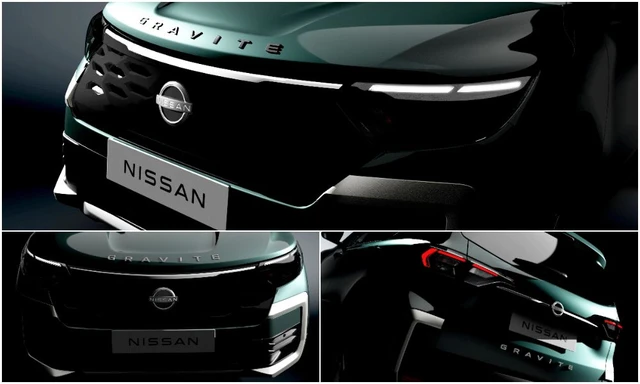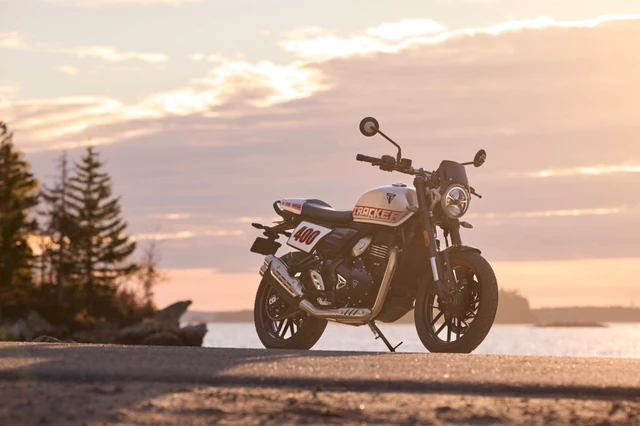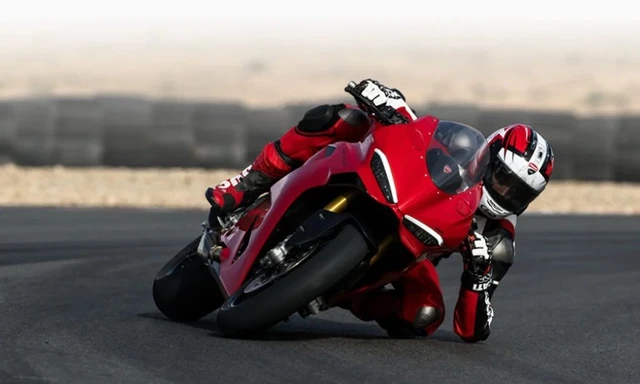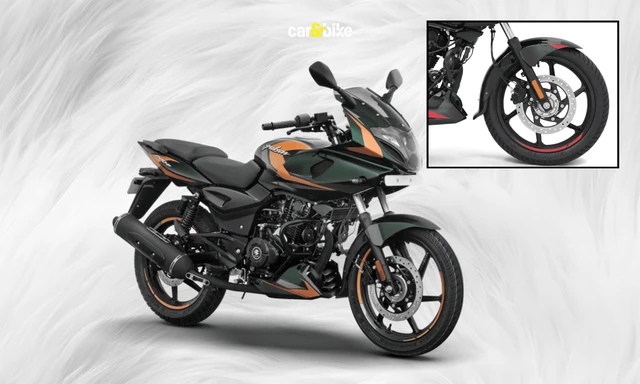2022 TVS Apache RTR 160, RTR 180: All You Need To Know

- Cosmetic changes are down to new liveries and some trim elements
- Both bikes see a minor jump in power
- Both motorcycles now get ride modes and TVS' SmartXonnect Bluetooth system
TVS has launched the 2022 Apache RTR 160 and RTR 180 in India. Prices for the RTR 160 start at Rs 1.18 lakh while the RTR 180 is priced at Rs 1.31 lakh (ex-showroom, Delhi). The new 160 and 180 bring with them a number of changes including new features, as well as changes under the skin as compared to the outgoing model. Here’s everything you need to know about the two bikes
The 2022 Apache RTR 160 will be sold alongside the RTR 160 4V
First things first, lets clear the air. The new RTR 160 isn’t a replacement for the RTR 160 4V currently on sale but instead replaces the older RTR 160 2V that has been on sale for a while now. The difference between the new RTR 160 and the existing 4V are notable starting with the latter sharper styling and 4-valve engine compared to the RTR 160’s two-valve unit. The 4V additionally uses an oil-cooled engine which develops greater power and torque.
Also read: TVS Apache RTR 160 & RTR 180 Launched In India
Both motorcycles get revised cosmetics
Starting with the Apache RTR 160, the basic design sees little change over the outgoing motorcycle with TVS not going for the more aggressive look of the 4V. The bike however does get new LED headlamp and tail-lamp along with a wider 120-section rear tyre. The 2022 model also gets revised body graphics as compared to the outgoing model.
The RTR 180 too gets the updated LED light clusters along with new graphics and use of new trim along the fuel tank and below the rider’s seat. The exhaust chrome garnish too is redesigned though it retains elements such as the gold finish on the front fork and rear suspension.
Both the RTR 160 and RTR 180 (pictured) get new liveries, minor cosmetic tweaks and new LED light clusters
Mechanical update
TVS has made some changes under the skin to both motorcycles. To start with the RTR 160 is now 2 kg lighter while the RTR 180’s weight is down by 1 kg. Both bikes also get a bump up in power. The RTR 160’s 159.7 cc, single-cylinder unit now develops 15.8 bhp at 8,750 rpm , up from 15.3 bhp at 8,400 rpm. Torque has reduced from 13.9 Nm to 13.85 Nm though peak torque is still made at an identical 7,000 rpm.
Both motorcycles get a minor bump up in power
The RTR 180 meanwhile now develops 17.02 bhp at 9,000 rpm, up from 16.5 bhp at 8,500 rpm. Torque meanwhile remains identical at 15.5 Nm at 7000 rpm. Both bikes get a 5-speed gearbox.
New Equipment
Coming to the equipment, both motorcycles now get a new digital instrument cluster with a gear position and gearshift indicator. Also added to the package is TVS SmartXonnect Bluetooth system that lets users pair their phones with the digital instrument panel to display turn-by-turn navigation and display message and call notifications. The system is standard on the new RTR 180 though its only available as standard on the top-most variant of the RTR 160.
Both the RTR 160 and RTR 180 get a new digital instrument cluster and feature the company's SmartXonnect Bluetooth system.
Also bundled in are three ride modes – Rain, Urban and Sport – that change engine responsiveness and output.
Trending News
 1 min readTriumph Tracker 400: In Pictures
1 min readTriumph Tracker 400: In Pictures 1 min readTriumph Tracker 400 Unveiled in UK
1 min readTriumph Tracker 400 Unveiled in UK
Latest News
 Amaan Ahmed | Dec 18, 2025Nissan Gravite MPV (Renault Triber Derivative) To Be Launched Early In 2026Nearly seven years on from the launch of the MPV it shares its underpinnings with arrives Nissan's entry-level 7-seat model; to debut in January.2 mins read
Amaan Ahmed | Dec 18, 2025Nissan Gravite MPV (Renault Triber Derivative) To Be Launched Early In 2026Nearly seven years on from the launch of the MPV it shares its underpinnings with arrives Nissan's entry-level 7-seat model; to debut in January.2 mins read Jafar Rizvi | Dec 18, 2025Tata Sierra Pure, Pure+ Variants Explained In PicturesThe Pure trim of the Sierra is priced from Rs 12.49 lakh to Rs 17.49 lakh (ex-showroom), depending on the powertrain option. Here is a breakdown of what it gets.3 mins read
Jafar Rizvi | Dec 18, 2025Tata Sierra Pure, Pure+ Variants Explained In PicturesThe Pure trim of the Sierra is priced from Rs 12.49 lakh to Rs 17.49 lakh (ex-showroom), depending on the powertrain option. Here is a breakdown of what it gets.3 mins read Janak Sorap | Dec 17, 2025Triumph Tracker 400: In PicturesTriumph has unveiled the new Tracker 400 based on the Speed 400. Here’s a quick look at the motorcycle in pictures.1 min read
Janak Sorap | Dec 17, 2025Triumph Tracker 400: In PicturesTriumph has unveiled the new Tracker 400 based on the Speed 400. Here’s a quick look at the motorcycle in pictures.1 min read Jaiveer Mehra | Dec 17, 2025Tata Sierra Smart Plus Revealed In Official Pictures: What Do You Get For Rs 11.49 Lakh?While nearly everyone has seen the Sierra in pictures and many in person at dealerships, you’ll likely only have seen the top models. But what is the base variant like?2 mins read
Jaiveer Mehra | Dec 17, 2025Tata Sierra Smart Plus Revealed In Official Pictures: What Do You Get For Rs 11.49 Lakh?While nearly everyone has seen the Sierra in pictures and many in person at dealerships, you’ll likely only have seen the top models. But what is the base variant like?2 mins read car&bike Team | Dec 17, 20252025 Ducati Panigale V2, Streetfighter V2 Recalled In The USThe recall states that two ABS fuses may have been inadvertently fitted in the wrong positions during wiring assembly and could increase the risk of a crash.3 mins read
car&bike Team | Dec 17, 20252025 Ducati Panigale V2, Streetfighter V2 Recalled In The USThe recall states that two ABS fuses may have been inadvertently fitted in the wrong positions during wiring assembly and could increase the risk of a crash.3 mins read Jafar Rizvi | Dec 17, 2025Updated Bajaj Pulsar 220F Does Not Get Dual-Channel ABS; Company Issues ClarificationBajaj Auto has confirmed that the updated Pulsar 220F does not feature dual-channel ABS, contradicting earlier reports.1 min read
Jafar Rizvi | Dec 17, 2025Updated Bajaj Pulsar 220F Does Not Get Dual-Channel ABS; Company Issues ClarificationBajaj Auto has confirmed that the updated Pulsar 220F does not feature dual-channel ABS, contradicting earlier reports.1 min read
 Janak Sorap | Dec 11, 2025Harley-Davidson X440 T First Ride Review: Smarter and SharperHarley-Davidson has taken the X440 and given it a more focused and engaging twist. The result is the X440 T—essentially the same platform but updated in areas that give the motorcycle more appeal and riders more thrill.5 mins read
Janak Sorap | Dec 11, 2025Harley-Davidson X440 T First Ride Review: Smarter and SharperHarley-Davidson has taken the X440 and given it a more focused and engaging twist. The result is the X440 T—essentially the same platform but updated in areas that give the motorcycle more appeal and riders more thrill.5 mins read Shams Raza Naqvi | Dec 10, 20252025 Mini Cooper Convertible Review: More Colour On Indian RoadsThe updated Mini Cooper Convertible is set to be launched in the Indian market in the next few days. We drive it around Jaisalmer for a quick review.1 min read
Shams Raza Naqvi | Dec 10, 20252025 Mini Cooper Convertible Review: More Colour On Indian RoadsThe updated Mini Cooper Convertible is set to be launched in the Indian market in the next few days. We drive it around Jaisalmer for a quick review.1 min read Bilal Firfiray | Dec 8, 2025Tata Sierra Review: India’s New Favourite?Marking its return after a few decades, the reborn Sierra has made everyone sit up and take notice. But is it worth the hype?10 mins read
Bilal Firfiray | Dec 8, 2025Tata Sierra Review: India’s New Favourite?Marking its return after a few decades, the reborn Sierra has made everyone sit up and take notice. But is it worth the hype?10 mins read Girish Karkera | Dec 4, 20252026 Honda Prelude First Drive: Domesticated Civic Type RA sporty-looking coupe built to give customers a taste of performance but not at the expense of everyday practicality.5 mins read
Girish Karkera | Dec 4, 20252026 Honda Prelude First Drive: Domesticated Civic Type RA sporty-looking coupe built to give customers a taste of performance but not at the expense of everyday practicality.5 mins read Seshan Vijayraghvan | Nov 29, 2025Mahindra XEV 9S First Drive Review: Big Electric SUV, Bigger ExpectationsThe XEV 9S lands at a time when the EV crowd is growing fast. It’s a big, born-electric, three-row SUV that starts under 20 lakh. It sits close to the XUV700 in size, but the brief is very different. Here’s what it’s like on the road.11 mins read
Seshan Vijayraghvan | Nov 29, 2025Mahindra XEV 9S First Drive Review: Big Electric SUV, Bigger ExpectationsThe XEV 9S lands at a time when the EV crowd is growing fast. It’s a big, born-electric, three-row SUV that starts under 20 lakh. It sits close to the XUV700 in size, but the brief is very different. Here’s what it’s like on the road.11 mins read































































































































